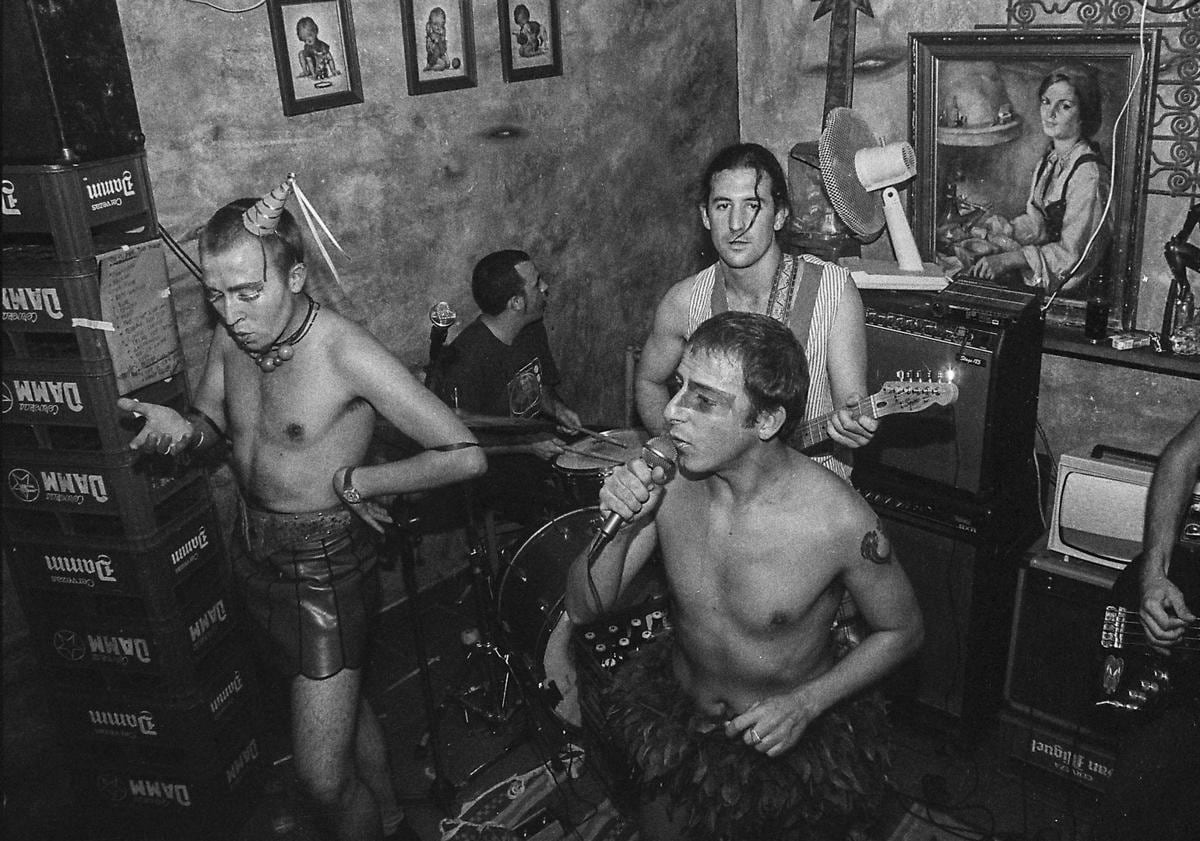Unpublished images of the Marbella scene of the 90s finally see the light of day
Thirty years on, photographer Bianca de Vilar exhibits the images she started taking at the age of 17, which depict an alternative Marbella
David Lerma
Marbella
Friday, 19 January 2024, 17:51
“It’s the story of my adolescence in Marbella,“ sums up Bianca de Vilar. Now a photographer at music festivals such as Sónar and Primavera Sound, all kinds of events and working for various news agencies, Bianca does not define herself as a photojournalist nor an artistic photographer. In fact the exhibition that opened last Friday in the centrally located bar Yuyu’s, which is halfway between a documentary and a personal diary, could place her in the line of artists such as American Nan Goldin or, closer to home, Miguel Trillo, a photographer recognised for his portraits of urban youth in the last forty years.
The exhibition La Movida Marbellí 90s aroused the curiosity of a generation of Marbella residents who last Friday evening recognised themselves in a hundred photographs, a journey back in time when the subjects were barely twenty years old and lived oblivious to what was happening in big cities. A generation that included, among others, actors Pepón Nieto and Mariola Fuentes and the late designer David Delfín, who in those years, between 1992 and 1994, had his own bar in Marbella. Opening the exhibition in a bar is fully intentional. The carefully staged montage itself evokes the precariousness but also the more creative side of a town better known for the splendour of the jet set than for the explosive creativity that was spontaneously being produced in local bars.



“Since I’ve been back in Marbella I’ve moved away from commercial photography and am trying to focus more on fine art photography, which is what I studied in London. I graduated in 1999. My father [Alexis de Vilar] is a photographer, and from a very young age I always had a camera with me, but initially I never thought I would get into it. I did Fine Art to dedicate myself to painting and sculpture, but as life would have it, I ended up in photography. I always had a camera with me when I went out. Now, with the mobile phone, everything has changed. I used to shoot in various formats. When I went out as a teenager with my camera. I didn’t do it with the intention of setting up an exhibition, but to have personal memories. I was protecting myself and opening myself up to the world,” she explains.
She admits that many of her images are full of ghosts, people who are no longer there or whom she does not remember. “These photos come from my personal albums, I have never shown them.”
Youth against Jesús Gil
“There is a lot of nostalgia. It was a golden age that we lived through, but there is also a lot of documentation. There were other photographers in Marbella and each one had their own vision,” explains this photographer who currently works for the Getty agency. “Those clubs, those bars, brought together a lot of people with a lot of talent,who wanted to do something. Many went to Madrid, Barcelona or abroad. It was a very restless generation,” she says, observing the public’s reactions.“A lot of things are happening in Marbella now: festivals, concerts, exhibitions, but nobody is documenting it,” she says, because nobody has taken on the role of audiovisual chronicler. “It is fundamental for the collective memory.”
She says that “with [former mayor] Jesús Gil we felt very rejected, a nuisance in every way”. On one occasion, things escalated. Bianca has images of that confrontation, including the burning of cars.
“We lost freedom of expression, but we could always be ourselves. We were able to adapt to new places, like when they moved us to Banana Beach. We knew how to keep the essence. We didn’t want to be mainstream.”
Andalusian breakbeat
Last year producer David Pareja made Break Nation, a 90-minute documentary that describes the Andalusian music scene between 1992 and 2002. It focuses on the electronic scene with broken rhythms known as breakbeat, a style that was successful in the south of Spain. Some of the musicians, still active today, appear in Bianca de Vilar's exhibition.
